Services
- Home
- Services
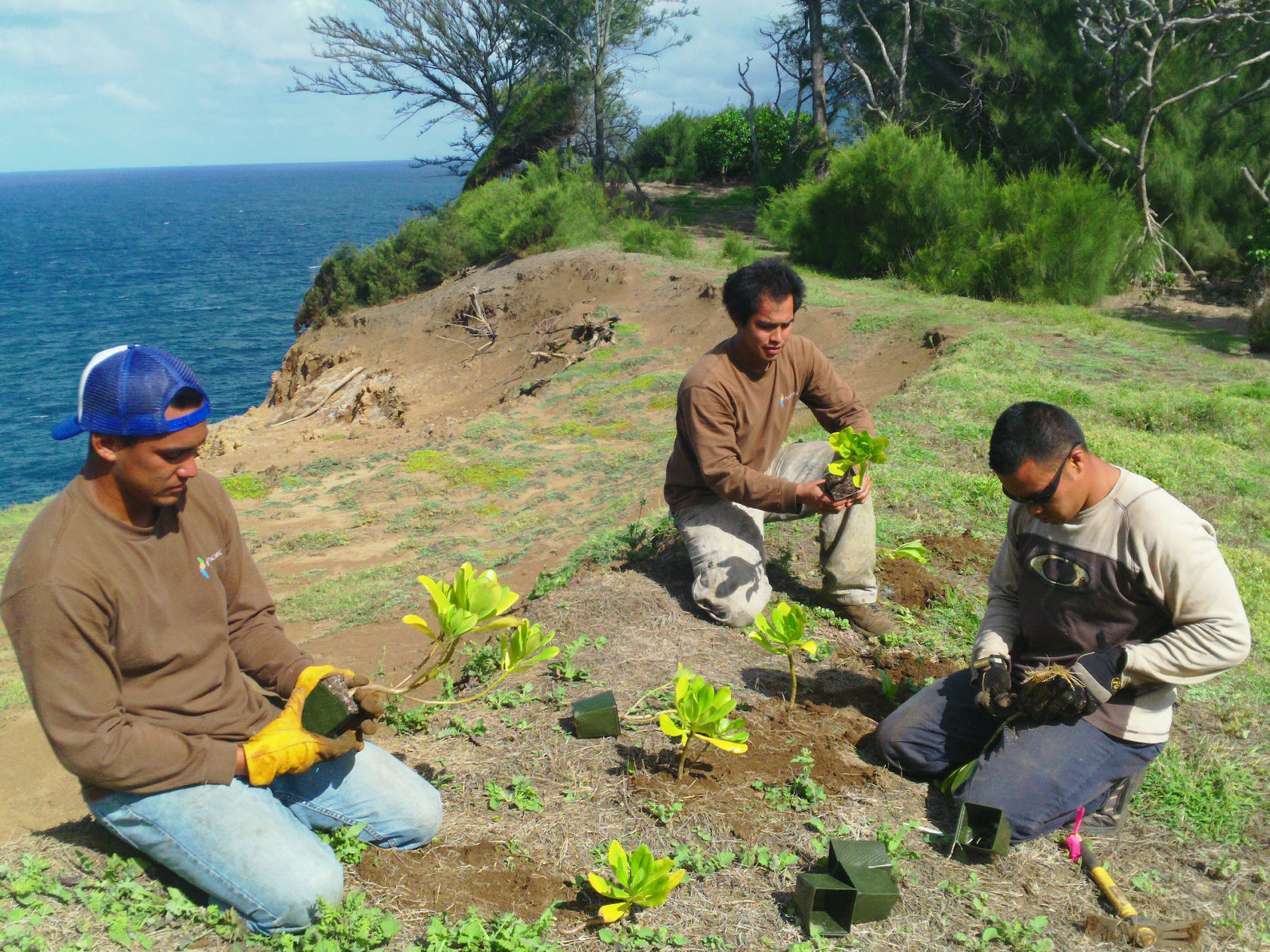
Land Management & Restoration
Kamehameha Schools, Land Management & Restoration: Pono Pacific has been contracted by Kamehameha Schools to develop long-term management plans/strategies, carry out on-the-ground restoration work, secure permitting, and develop community outreach opportunities at several of its properties across the state. Restoration work included seed collection and propagation, native outplanting, vegetation removal, invasive species eradication, trail maintenance, fence construction, and erosion control.
- ‘Uko’a, a 150-acre wetland including Loko Ea tributary in Waiālua, O’ahu
- Akoakoa, a 3-acre coastal parcel in Kohala, Hawai’i
- Pu’u Kali‘u, a 50-acre lowland forest in Puna, Hawai’i
The Nature Conservancy (TNC), East Moloka’i Watershed Partnership South Slope Animal and Weed Control: TNC Moloka’i Program contracted Pono Pacific to protect the flora and fauna in the Kamakou Preserve and other private lands that compose the East Moloka’i Watershed Partnership through the systematic removal of invasive weeds and ungulates. Throughout each year, Pono Pacific manages 13,000 acres, conducts 200 weed and 30 hunt sweeps, and dedicates over 2,500 crew hours towards the conservation of these areas.
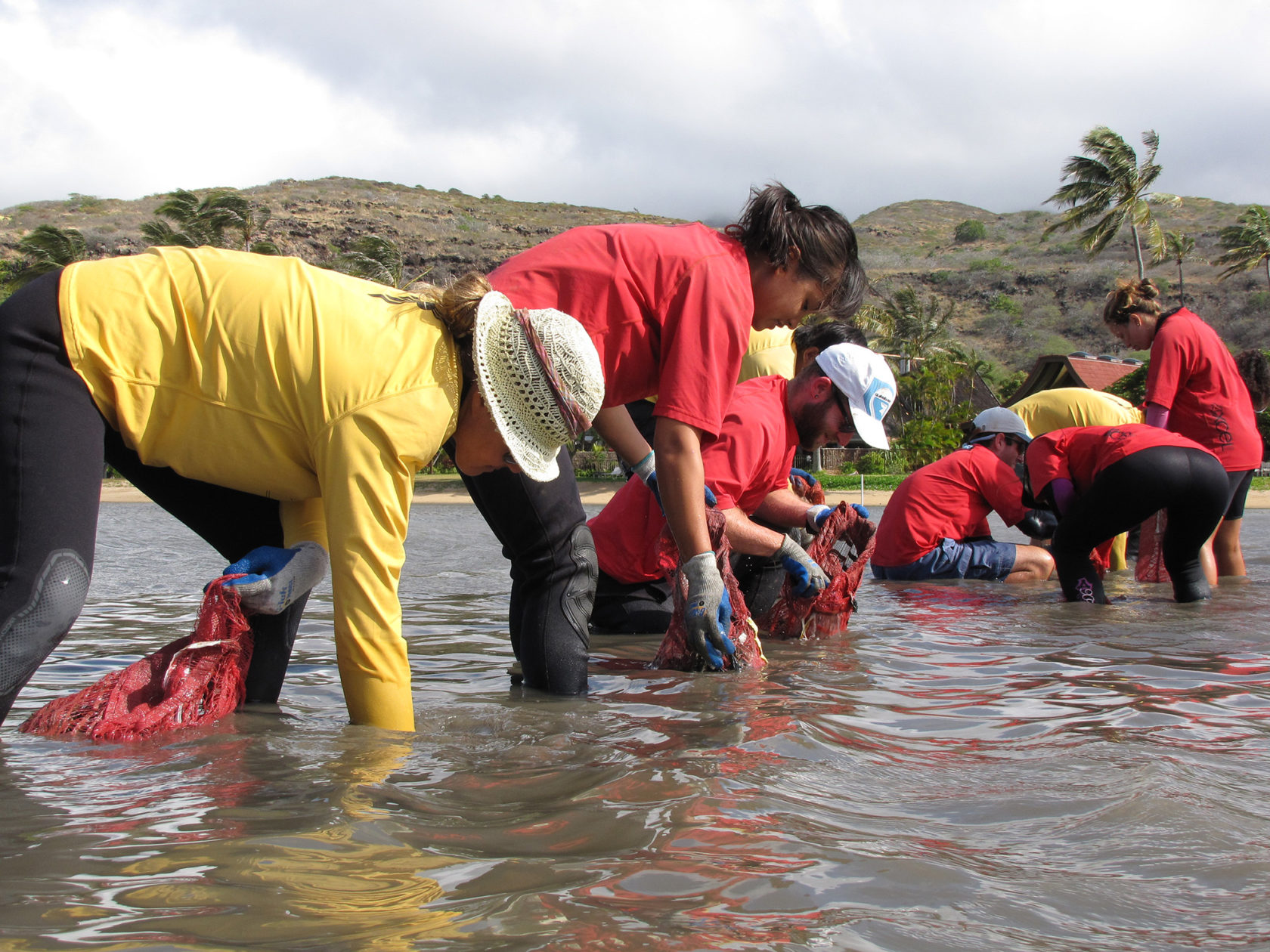
Invasive Species Eradication
The Nature Conservancy (TNC), Maunalua Bay Invasive Alien Algae Removal: Pono Pacific was contracted to remove 22 acres of alien algae from Maunalua Bay in East O’ahu. By project completion in April 2011, Pono Pacific had exceeded the original goal and cleared 25.7 acres, removing 2.9 million pounds of algae.
The Nature Conservancy (TNC), Heʻeia Mangrove Removal: TNC contracted Pono Pacific in 2017 to remove the largest mangrove trees in the country, some as tall as 60 feet, from a 6 acre area in Heʻeia, Oʻahu. A great deal of care and precision was needed to complete this project without disturbing the bat population nesting in the area.
Naval Facilities Engineering Command (NAVFAC) Mangrove Removal: From 2011 to 2013, Pono Pacific removed 1 acre of invasive mangrove along the West Lock of Pu’uloa. Due to our success on the original project, NAVFAC awarded us an additional mangrove removal contract to remove over 28 acres of mangrove. This contract was again renewed in 2017 to remove 1.7 acres of mangrove and maintain the previously cleared areas.
SRGII Coconut Rhinoceros Beetle (CRB) Removal: In 2018, Pono Pacific began a project to trap and monitor CRB at Joint Base Pearl Harbor-Hickam. This project involved monitoring, repairing, and maintaining up to 700 CRB traps in the area. Breeding site surveys were also conducted in accordance with protocols outlined in the HDOA CRB Program Manual.
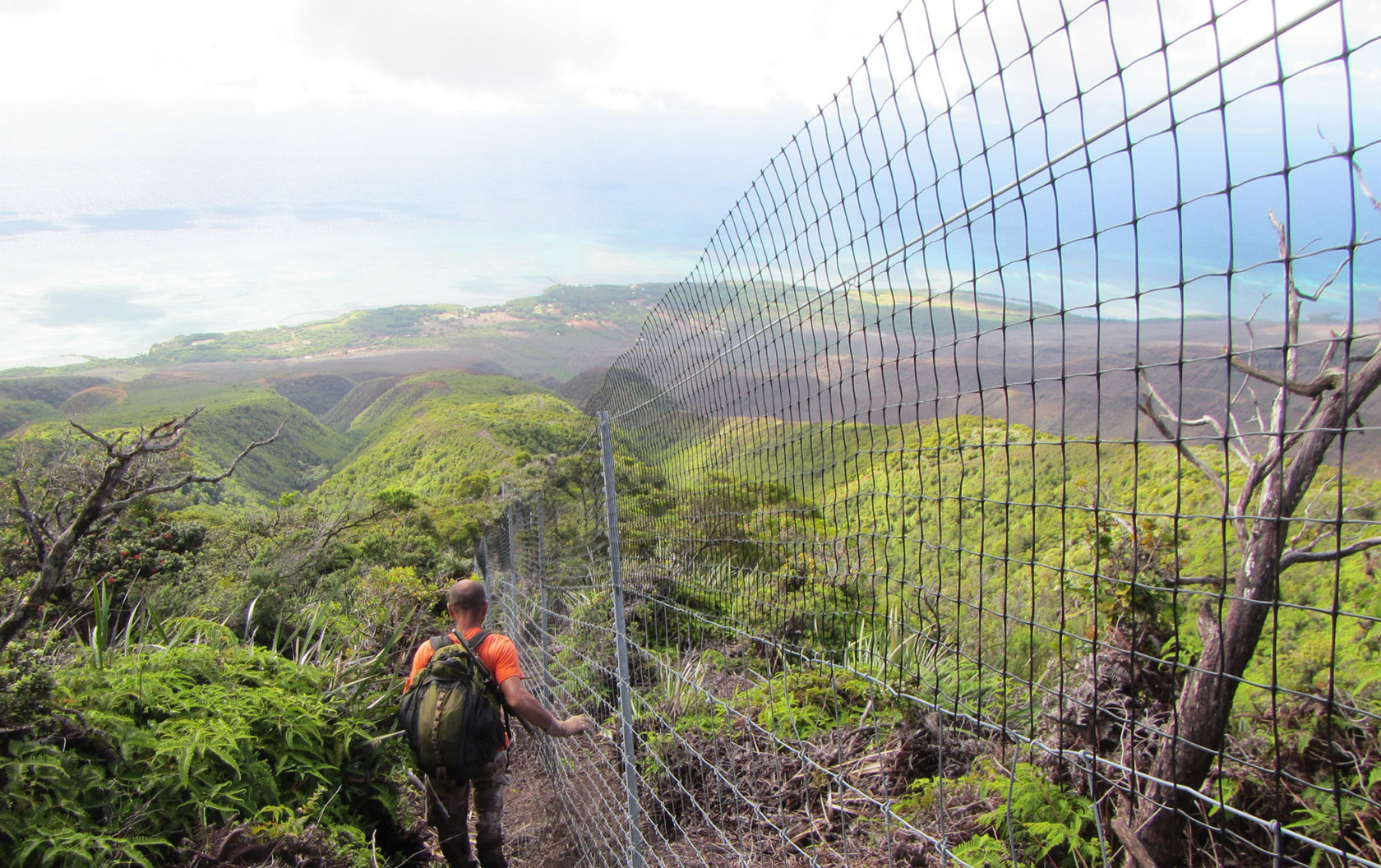
Fence/Remote Area Construction & Maintenance
Research Corporation of Hawaiʻi (RCUH) West Makaleha Endangered Snail Enclosure Project: In 2018, we constructed a 500 linear feet of predator-proof fencing for endangered tree snails at Mt. Kaʻala of the Waianae Mountains. The enclosure had to follow very detailed specifications in order to keep the snails safe from Rosy Wolf Snails, Jackson’s Chameleons, and rats.
Pacific Rim Conservation (PRC), James Campbell National Wildlife Refuge: Pono Pacific was contracted to construct over 3,700 linear feet of predator-proof fence within the James Campbell NWR. Requiring more detail than ungulate-proof fence, these fence specifications were uniquely designed to keep small mammals from entering the highly sensitive area and disturbing the endangered birds within.
The Nature Conservancy (TNC), Moʻomomi Fence: Pono Pacific was contracted by TNC to construct a predator-proof fence within the Mo’omomi Preserve along Moloka’iʻs north shore. Crews operated in extremely remote and harsh terrain while following very strict fence specifications to construct approximately 8,600 linear feet of fence. This project was successfully completed in April 2016, within just seven months of contract execution.
DLNR, Poamoho: Pono Pacific constructed approximately 19,537 linear feet of ungulate-proof fence along Poamoho (leeward side of Ko’olau Range) for watershed conservation efforts. Crews cleared the fence-line of non-native vegetation and constructed the fence using hog wire panels and skirting. This project area involved extremely remote and harsh terrain only accessible by helicopter and required our crews to camp each week.
Research Corporation at the University of Hawaiʻi (RCUH), ʻŌhikilolo: In May 2014, Pono Pacific was awarded a contract to construct a 9,843 linear-foot ungulate-proof fence on the very remote ‘Ohikilolo Ridge in the Wai’anae Range. Crews removed non-native vegetation and old fencing material from the fence-line corridor while constructing new/replacement fence. Despite random unforeseen weather that made unworkable conditions for multiple weeks Pono Pacific was able to complete the fence within five months.
Predator Exclusion Fencing
Leading the charge in predator exclusion fencing, Pono Pacific has built a majority of these types of fences in the state. For 22 years, Pono Pacific has been contracted by the State, Federal government, private organizations, and landowners to install conservation fencing to protect native species and habitat—building 152,200 feet in conservation fencing for these entities, mostly in rugged and remote terrain throughout the state.
In late 2023, Pono Pacific completed construction of the longest predator exclusion fence in the United States. The 11,200-foot-long predator exclusion fence on Kauaʻi is located along the perimeter of the Kīlauea Point National Wildlife Refuge (KPNWR). The KPNWR predator exclusion fence will help protect tens of thousands of Hawai‘i’s migratory and native birds from non-native predators such as feral cats and pigs, including three bird species that are federally listed as threatened or endangered: the Newell’s shearwater (ʻaʻo), Hawaiian petrel (ʻuaʻu), and Hawaiian goose (nēnē). The fence will enclose 168 acres of the Refuge and will be tall and robust enough to keep non-native predators from jumping over or entering the protected area.
Pono Pacific is currently installing the next longest predator exclusion fence in the nation: a 14,785-foot predator-exclusion fence for the Department of Land Natural Resources (DLNR) at Kanahā Pond Wildlife Sanctuary. Kanahā Pond is fed by fresh water and prehistorically was a true wetland. It is still a wetland but also now acts as a flood control basin as well as a wildlife sanctuary. It’s one of the largest and most important havens for wildlife in Hawai‘i. This wetland area provides protection for Hawaiʻi waterbirds— many endangered— as well as migratory bird species. The fence will provide safe nesting habitats for native and endangered birds.
Other predator exclusion fence clients include:
- Research Corporation of Hawaiʻi (RCUH) West Makaleha Endangered Snail Enclosure Project
- Pacific Rim Conservation (PRC), James Campbell National Wildlife Refuge
- The Nature Conservancy (TNC), Moʻomomi Fence
- Poamoho (DLNR)
- Research Corporation at the University of Hawaiʻi (RCUH), ʻŌhikilolo
Food Security
As a local company committed to Hawai‘i, Pono Pacific’s goal is to help our state mitigate food insecurity by building infrastructure that supports sustainable agriculture, which will result in a more resilient food system. Pono Pacific sees sustainable agriculture resources as the key to moving Hawai‘i toward a more regenerative economy. Pono Pacific has been restoring and revitalizing 468 acres of agricultural land owned by Turtle Bay Resort in order to establish Hawaii’s first large-scale farm-to-resort operation, Kuilima Farm. As land and farm manager, Pono Pacific has recently achieved these milestones:
- Installing a solar-powered hydroponic lettuce growing facility in 2021, which now produces eight varieties of lettuce, growing 25 percent faster than traditional soil method. Kuilima Farm currently produces over 2,000 lbs of lettuce greens per month.
- Pono Pacific’s farm crew has been able to achieve U.S. Department of Agriculture food safety certification at Kuilima Farm from 2022-2024, which allows increased food security to the North Shore tourism industry and surrounding community.
- The new wash-pack facility installed at Kuilima Farm in 2023 will further enhance the farm’s ability to distribute produce grown by streamlining vegetable washing and packing operations, allowing increased production volume and greater food security for the surrounding community as well as the North Shore tourism industry.
- All five restaurants at Turtle Bay Resort use fresh produce grown directly across the street at Kuilima Farm. Chefs at Turtle Bay Resort source 800 pounds of fresh produce per week from the farm, including salad greens, vegetables, herbs, and fruits for their menus.
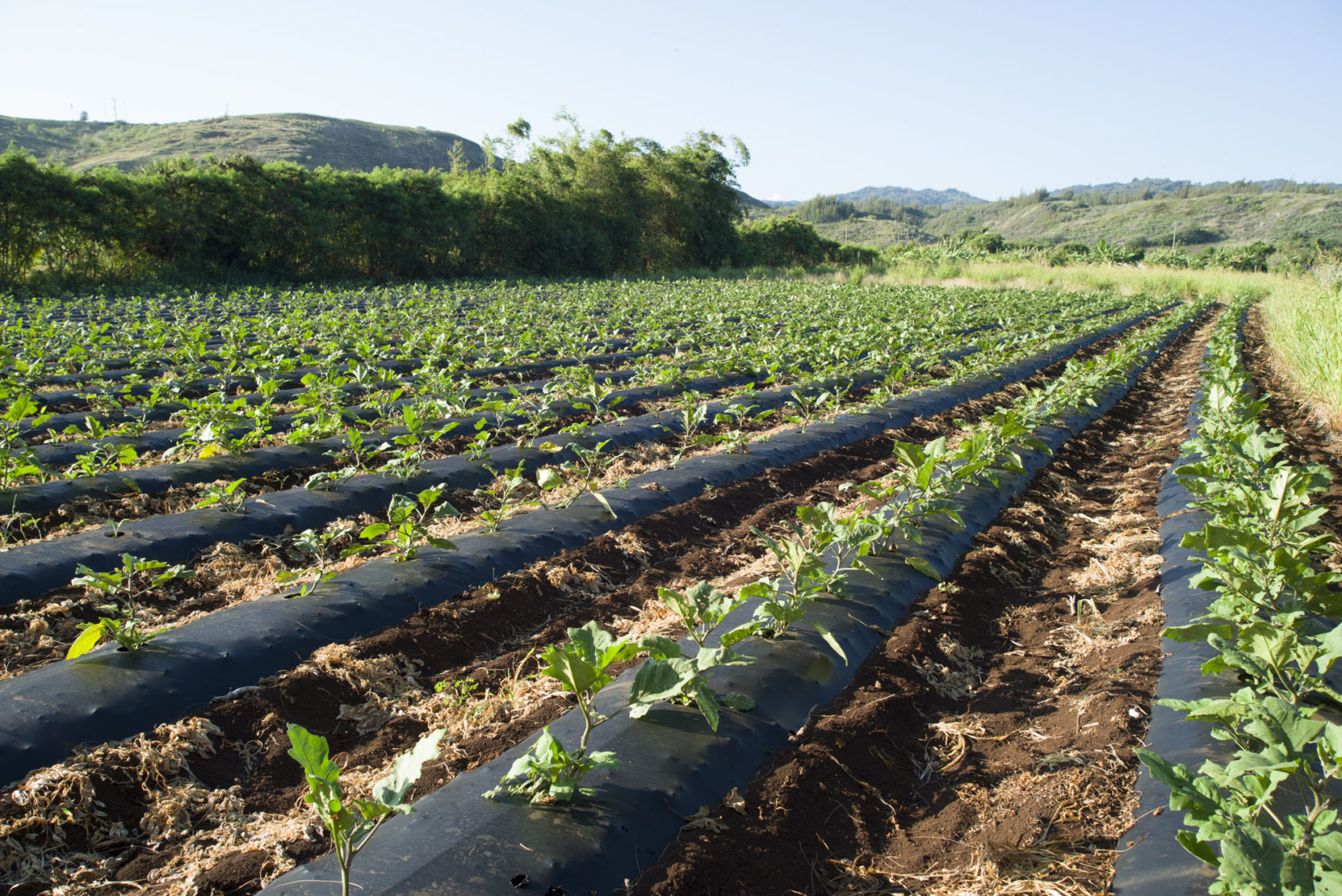
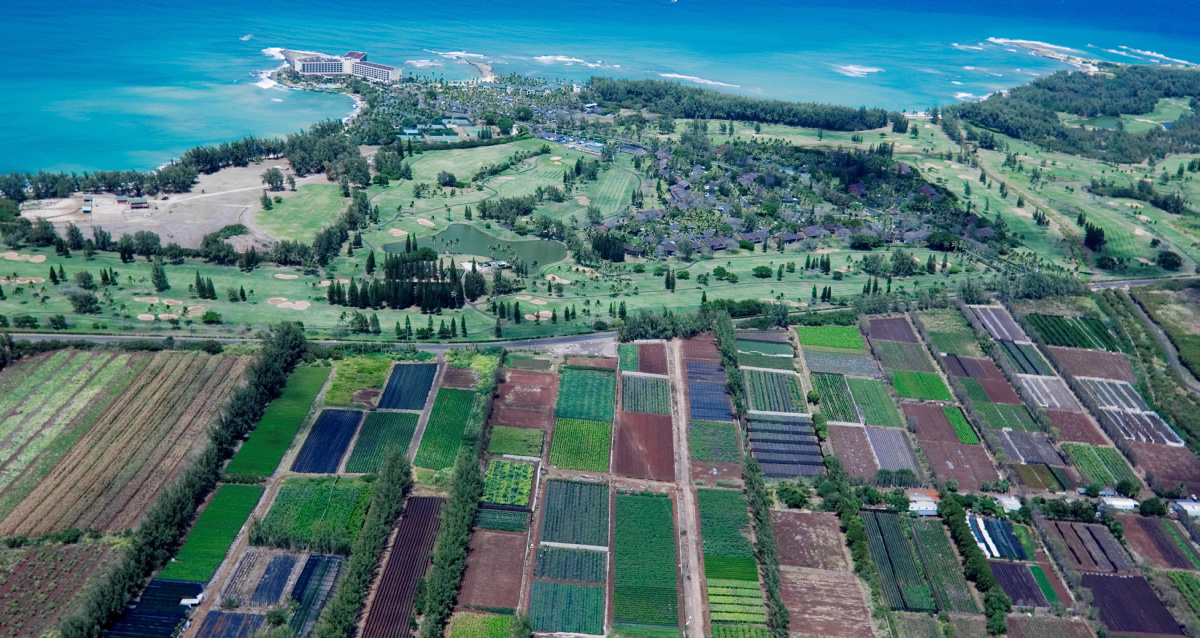
Renewable Energy Sources
As a local company committed to Hawai‘i, Pono Pacific’s goal is to help mitigate climate change by building infrastructure that supports renewable energy, which will result in a more regenerative economy. Pono Pacific’s energy projects currently include:
- Supporting de-carbonization by developing Ag relationships and identifying crops for locally-grown, renewable plant fuels. Pono recently launched a partnership with Par Hawaii to identify and develop local sources of crops to produce plant-based, renewable diesel and sustainable aviation fuel (SAF) at Par’s Kapolei refinery.
- Deploying restorative capital that develops sustainable agriculture and renewable energy markets across the Pacific, building healthy and resilient economies and ecosystems, via a new sister company called Pono Island Capital.
Predator & Ungulate Control
Sustainable Resources Group International, Inc. (SRGII), Lualualei Rodent Control: Pono Pacific was contracted in 2017 to perform rodent control in the JBPHH Lualualei Annex. First, trapping grids had to be established in areas where federally listed species were at risk. These trapping grids were monitored and data, such as number of traps and number of rodents trapped, was measured.
U.S. Army Environmental Services, Predator Control: Pono Pacific had been assisting Army Environmental Services with recovery efforts of the ‘elepaio, an endangered forest bird by baiting and trapping the ‘elepaioʻs greatest predators, rats and mongoose, at various locations across O’ahu. This was done by installing rodenticide boxes, diphacinone poison, and snap traps to remove the invasive, feral rodents. Pono Pacific also monitored ‘elepaio populations by recording nests and breeding pairsʻ progress. In 2012, over 90 ‘elepaio fledges were observed and documented with Army Environmental Services.
The Nature Conservancy (TNC), Waikamoi Ungulate Sweeps: Pono Pacific performs ungulate hunting sweeps within Mauiʻs Waikamoi Preserve and Moloka’iʻs south slope. Our experienced crews conduct regular hunts, use GPS technology to map data and receive thorough yearly evaluations.
The Nature Conservancy (TNC), Roi Removal: In 2011, The Nature Conservancy Hawai’i Island Program contracted Pono Pacific to dispatch, tag, and monitor roi, a predatory fish, in the waters off Puako and Ka’upulehu. Pono Pacific employed a team of spear fishermen for approximately 18 months to complete the project.
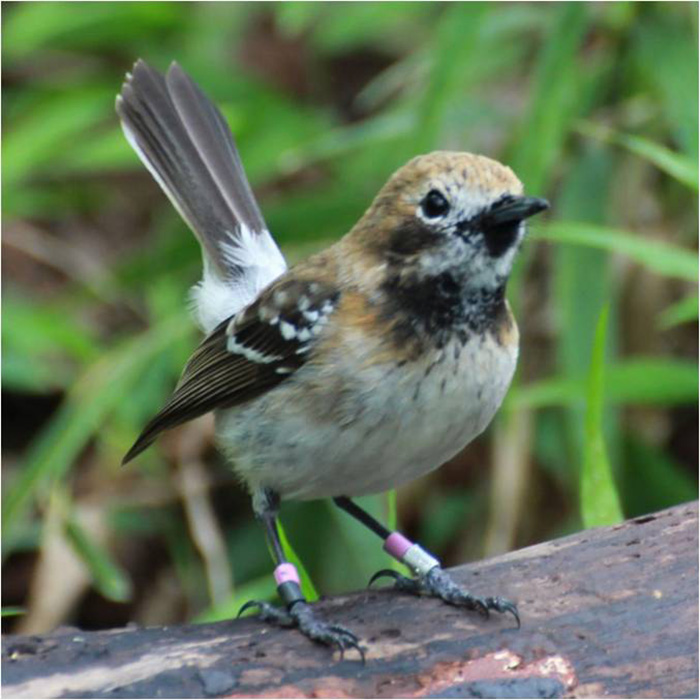
Trail Construction & Maintenance
Kalalau Trail Restoration Project: In 2009, Pono Pacific was contracted by the Kaua’i Planning and Action Alliance (KPAA) to manage the construction, administration, and volunteer efforts for the restoration of the Kalalau trail – Ke’e Beach to Hanakapiai Stream. In 2012, Pono Pacific was contracted by KPAA to restore the remainder of the trail. The second portion – Hanakapaiai Stream to Kalalau Valley – required remote camping operations, as well as a botanical survey prior to and upon conclusion of the project.
State of Hawaiʻi Department of Land and Natural Resources (DLNR) Nā Ala Hele (State Trail & Access Program): Nā Ala Hele contracted Pono Pacific in 2013 to manage and maintain multiple mountain trails throughout O’ahu, including the 15.5 mile Maunawili trail. Pono Pacific crews utilized both mechanical and chemical means to control vegetation along the trail routes.
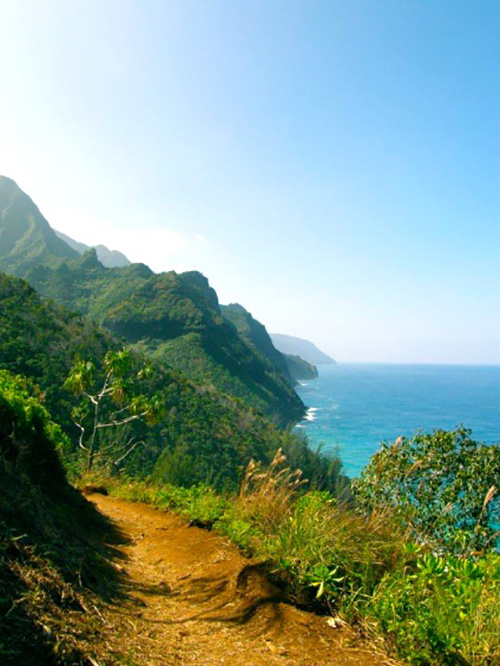
Project Management
U.S. Army, QTR 1: Pono Pacific was contracted by the U.S. Army Range Division to restore a 100+ acre target range in order to prevent soil loss and pollution of riparian areas. The project involved civil construction of drainage swales and retention basins, hydro-mulching, installation of erosion control mechanisms, and seeding of native Hawaiian species.
Hawai’i Youth Conservation Corps (HYCC): HYCC is an environmental education program to educate Hawaiʻiʻs youth and to develop an environmental mindset, cultural awareness, leadership, and foster personal growth. Pono Pacific develped this program under the State of Hawai’i Department of Land and Natural Resources (DLNR). Since 2001 the program has grown from just 16 summer positions on one island, to over 250 full and part-time positions on six islands in 2010. The programs were so successful that Pono Pacific developed a separate nonprofit, Kupu, in 2007.
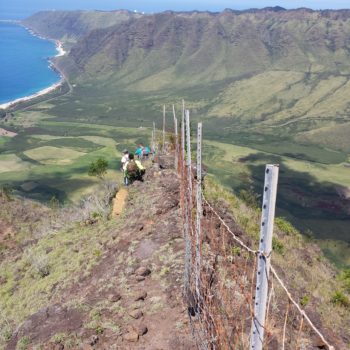
Conservation Services
Individual conservation services to support short-term and long-term land management needs.
- Geographic Information Systems (GIS) and data collection
- Invasive Species Control
- Predator and Ungulate Control
- Trail Maintenance
- Fence Installation and Maintenance
- Coastal/Nearshore Restoration
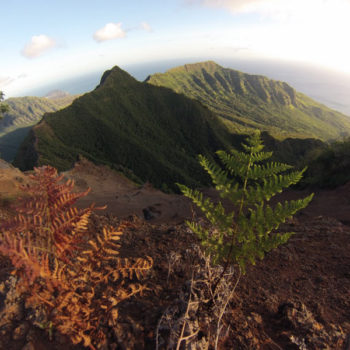
Land Asset Management
Comprehensive services including financial management, on the ground operations, stakeholder engagement, compliance, fund raising, grant writing, and reporting.
Oversight of consultants and contractors from environmental specialists to design and permitting to construction projects:
- Sustainable Agriculture
- Watershed Management
- Renewable Energy
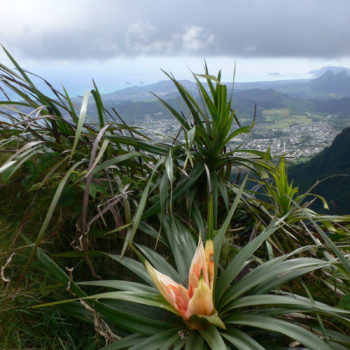
Eco-Asset Project Management
Development of eco-sustainable projects with local partners for meaningful and long-term change. We develop sustainable projects with a critical network of local and national partners, conscious capital, and experienced specialists to create meaningful long-term impact.
- Land-Based Renewable Energy Projects
- Home
- Services